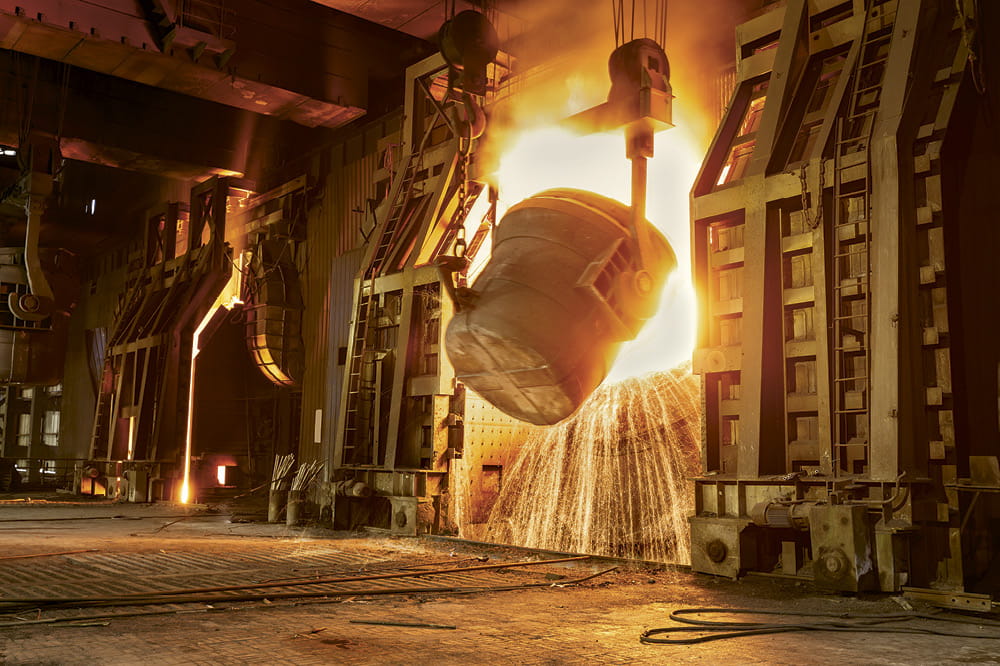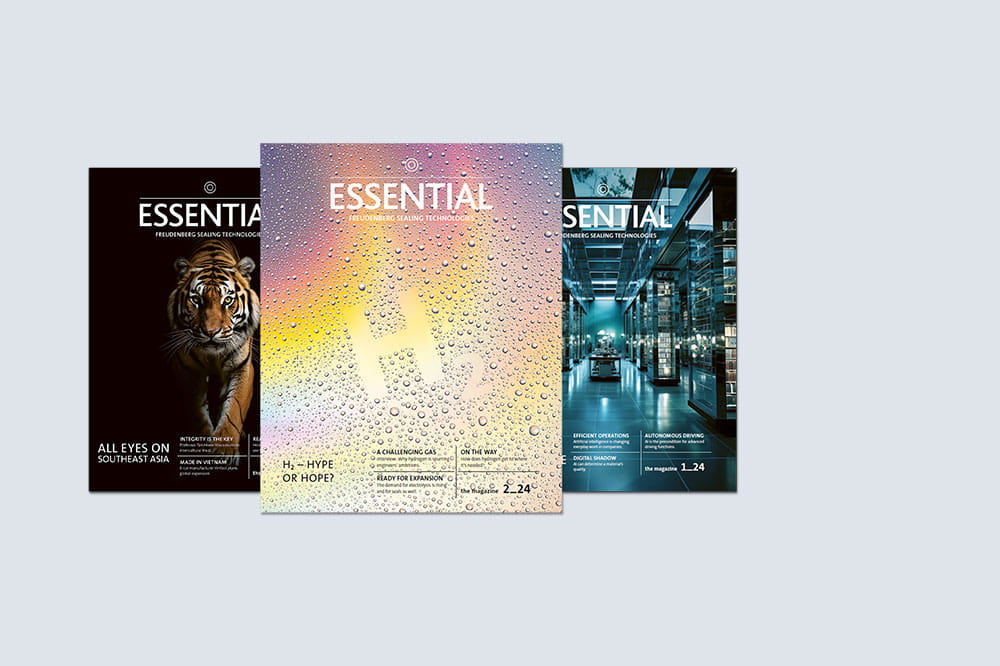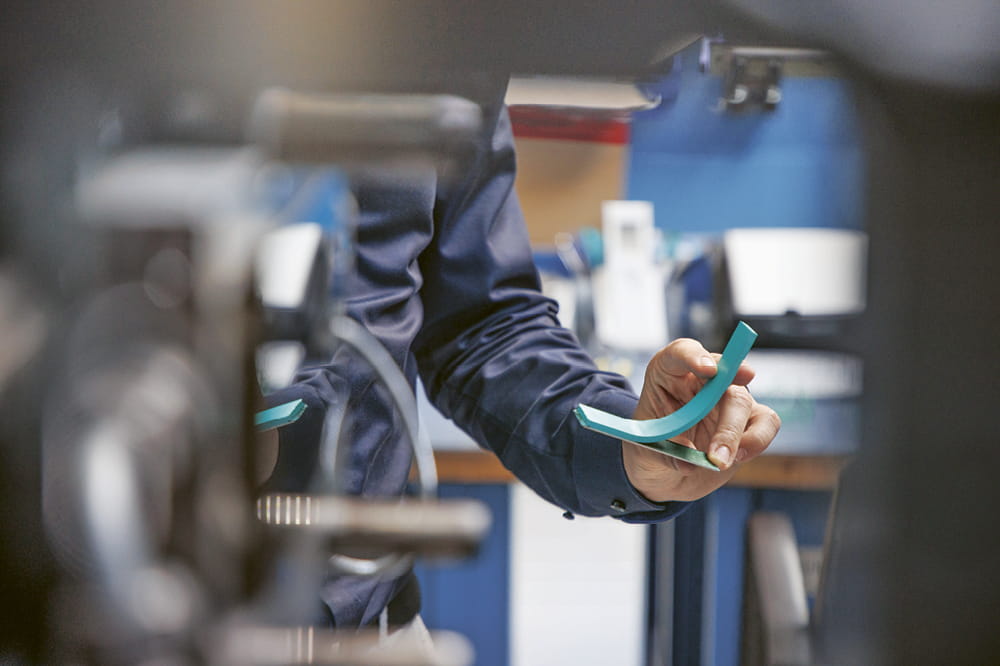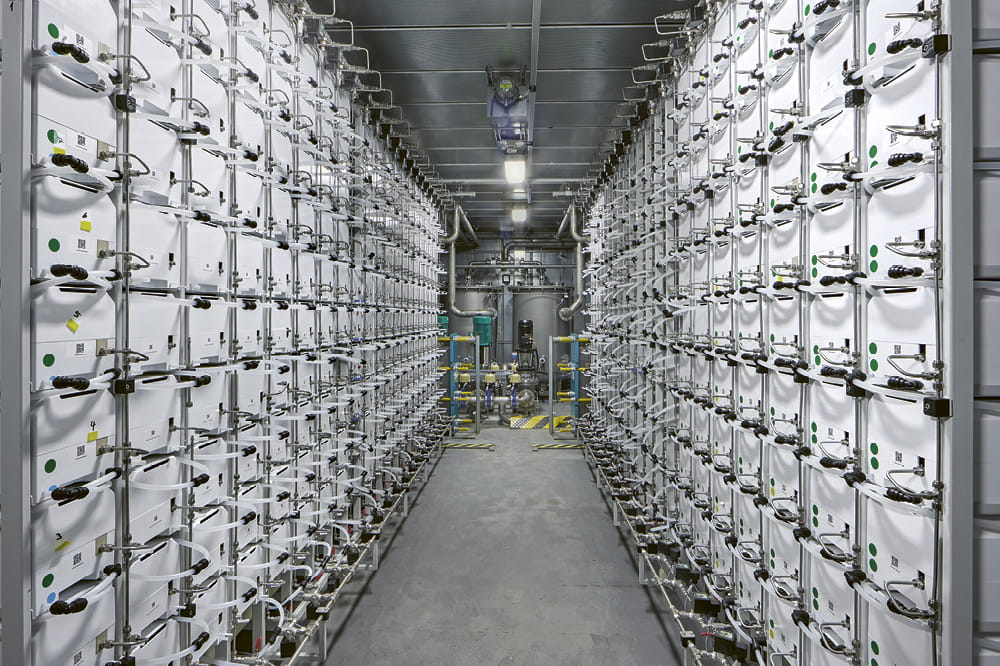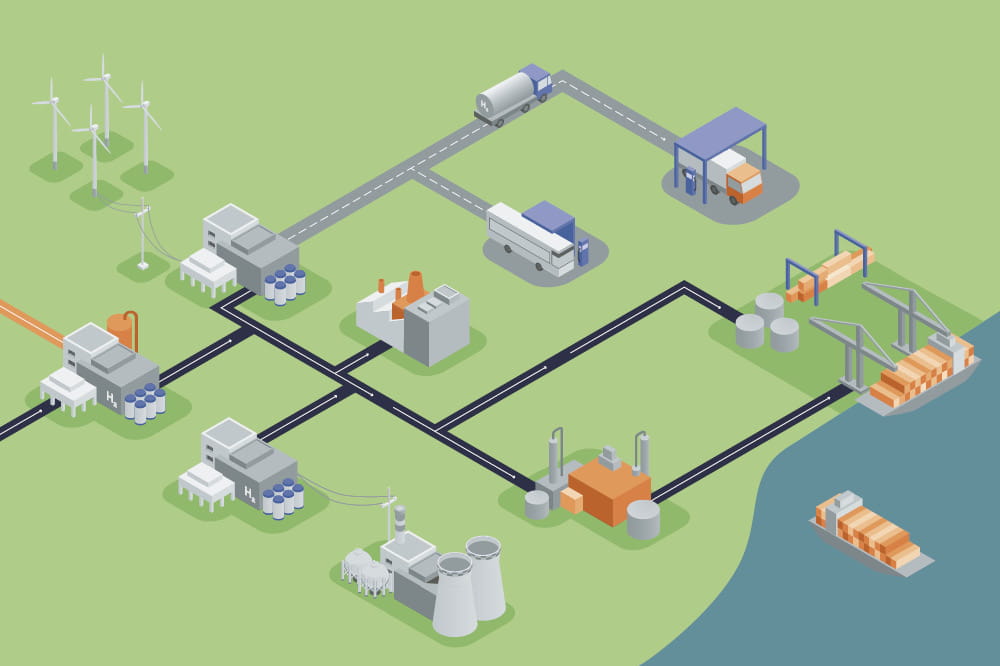Obtain news and background information about sealing technology, get in touch with innovative products – subscribe to the free e-mail newsletter.

Hydrogen: Hype or Hope?
Again and again, hydrogen has spurred high expectations only to dampen them. Yet it continues to be promising. It is no longer just a fuel. It is transforming the energy sector and industry. But more progress will take material and engineering expertise, in everything from production to transport and use.
An essay by Claus Möhlenkamp, Chief Executive Officer, Freudenberg Sealing Technologies:
Overblown expectations are a feature of everyday life. People are inclined to be optimistic. Our brains respond positively to new information, and we tend to develop a herd mentality. This all can lead to “hype.” The derivation of the word has never been clarified. It likely comes from either the rhetorical device, hyperbole, or from the underworld slang of the early 20th Century, when drug addicts gave themselves injections with hypodermic needles. The possibility is not far-fetched: Hype frequently takes the form of an intoxication that seizes people and entire markets – until the hangover, that is. The dot.com bubble comes to mind.
Challenging: When hydrogen is used in steel-making, the potential for reducing CO2 is huge. So is the demand for hydrogen produced with green processes. Still, it is far from being sufficiently available. © iStock/zhaojiankang
The history of hydrogen is also a story of expectations, hopes and disappointments. In 1800, the gas was produced with electrolysis for the first time, and even back then, humanity dreamed of clean water replacing dirty coal. But hydrogen remained too expensive in the competition with oil and natural gas. It attracted serious attention again in the 1970s during the oil crisis. Automakers began developing the first fuel cell vehicles, but they remained experimental. It was perhaps due to this long prehistory that the world of the early 2000s was determined not to fall for another round of hype – and the disillusion turned out to be all the more severe. Then U.S. President George W. Bush made more than $1 billion available for his new hydrogen fuel initiative and outlined the mass production of hydrogen-fueled vehicles in the future.
That future was delayed. Once again, disappointments followed the hype. Reality can rarely keep up when hopes and expectations are overblown. It quickly turned out that the production of hydrogen was still much too expensive, and the infrastructure for economical transport was lacking. A hangover followed the high, and the hype gave way to a vale of tears.
With some exaggeration you could say: Searching was yesterday. Finding is today.
But what actually happened? Was the vision of hydrogen a flop? Or did progress simply not keep up with expectations? We now know the latter was the case. There is potential in hydrogen – far more than imagined at the start of the 2000s, when too much attention was paid to fuel cells (forgetting the findings of 19th century researchers who worked with hydrogen as an energy storage medium.) Hydrogen is helping to replace fossil fuels, store energy and generate heat in multifaceted ways. Incidentally, when expectations are over-the-top and rushing in just one direction, potential is more likely to be overlooked.
Ambitious: Saudi Arabia is getting in shape for the future. Its flagship NEOM project on the Red Sea is one example. Aside from a large, climate-neutral city, it envisions the construction of the world’s largest electrolysis facility for the production of green hydrogen. © shutterstock/choi yurim
When we decided to pursue hydrogen at Freudenberg Sealing Technologies 20 years ago, we knew there was a risk. There is no natural law guaranteeing a new golden age after a time of disappointment. Some technologies and ideas never fly, and the hype may remain an illusion to some extent. But we were convinced early on that hydrogen is more than just a bubble: Hydrogen is here to stay. And we are sticking with it even if history is repeating itself. We are reading and hearing doubts and warnings that the technology is not moving very quickly and that much more research is needed.
Does that sound familiar? It does. And that’s why we are looking at the future calmly: Around the world, governments are providing financial resources for their hydrogen initiatives. We expected that it would take time for the developments to find traction. But the money will help an industry that so far lacks the economies of scale it needs. It will help to achieve the clout that a certain size brings, even without subsidies. This underscores the fact that political support remains urgent. Governments must keep their eye on the ball, create the right conditions, and provide security. Otherwise, they will be hurting themselves and their economies.
It is part of a healthy development if doubts and setbacks recur in the coming months and years. That doesn’t frighten us. It spurs us on, as we see research and innovation as a Freudenberg Sealing Technologies strength. We intend to actively participate in the development of the hydrogen economy.
There are more than enough fields of application. In this edition of ESSENTIAL, we present a range of them. Hydrogen is a challenging element. It diffuses easily through many materials, has a very low density, takes up a lot of space, and corrodes materials. In short, it places extremely high demands on seals. And since the production, storage, transport and use of hydrogen are still in development stages, standardized processes, products and technologies have not become established in many cases. The situation is ideal for us to tap into our materials expertise and inventive spirit and participate in the industry’s development, perhaps contributing to its standardization and scaling. The lesson is clear: It pays to keep a clear head amid the hype.
This article originally appeared in ESSENTIAL, Freudenberg Sealing Technologies’ corporate magazine that covers trends, industries and new ideas. To read more stories like this, click here.
ESSENTIAL – the Magazine
Don’t Miss a Trend
Smart sealing solutions for nearly every sector, technology trends and exclusive interviews – Find them in our company magazine ESSENTIAL with a print subscription and digitally.
More Stories About Sustainability

Join Us!
Experience Freudenberg Sealing Technologies, its products and service offerings in text and videos, network with colleagues and stakeholders, and make valuable business contacts.
Connect on LinkedIn! open_in_new